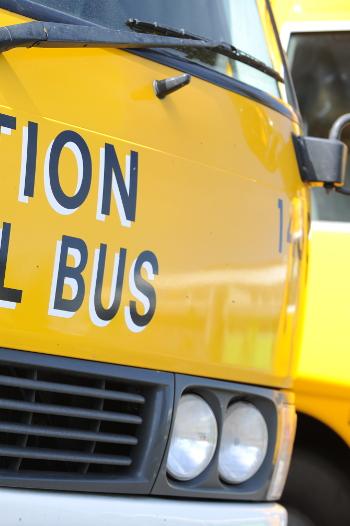Here comes the bus
Duration/age

When you travel by bus there are many decisions to be made. Where will you catch the bus? How close is the bus stop to your house? If you don’t know what number bus to catch or where to catch the bus from, how will you find out? How will you know when to get off? Do you know the bus stop number or will you look for a landmark?
We’re going to take the bus into town today. We’ll need to look at the bus timetable to see what number bus to catch and what time the bus leaves.
Talk to your child about what will happen when the bus arrives. When you enter the bus you always go in through the front door. Why is there a front door and a back door on most buses? Do you have a bus ticket or will you need to buy one?
We don’t need to be in town until after 9 am. It will cost us more if we catch the bus before 9 o’clock.
You are three years old so we don’t need to buy a ticket for you.
Finally, when the bus has arrived, you can get on and look for a seat. You might not be able to find a seat if you are not at the beginning of the run or if it is busy. If the bus is empty do you have a favourite place or spot to sit?
I like to sit right up the front so I can see what is happening on the road ahead.
Materials you will need
- Bus
- Bus stop
- Bus ticket or metrocard
Alternative tools
- Timetable
Skills this activity improves
Why does this matter?
Catching or planning to catch the bus makes use of our measuring skills. You are using different forms of measurement when you work out:
- what time to catch the bus
- how far we have to walk to get to the bus stop
- how much the trip will cost
Combining the different forms of measurement together helps with problem-solving and decision making.
Navigating where to enter the bus, where things are located within the bus and finding a seat involves spatial awareness and planning. As children enter the bus they are learning to move themselves - and objects they might be carrying - within a confined space so that they do not bump into objects or people around them.
What does this lead to?
As children experiment with navigating themselves around objects and within confined spaces they are learning to orient themselves and to make judgements based on size, distance and width. They are beginning to estimate the size of a space and to make comparisons between themselves and the size of the other object.
Using measuring skills and the different elements of measurement - such as time, distance, weight and cost - helps us to make decisions and to organise our lives. The language of measurement helps us to explain our decisions to other people.
Language to use
- Bus stop, ticket, ticket machine, bus time table, bus stop number
- Door, window, seat, bell, button
- Driver, passenger
- Front, back, middle
- Waiting, coming, near, next
- Full, empty, few, half
- Journey, route, direction
- Length
Questions to use
- What number bus do we need to catch?
- What time do you think the bus will come?
- Will our bus be the next one?
- Where will we sit?
- What stop do we get off at?
Useful tips
- Young children find it difficult to understand the concept of time when talked about as a number. You could measure time by counting how many jumps you can do until the bus comes or the number of red cars you see before it arrives.
- You might also like to take a look at the activities Timetables and Travelling.
- Remember to talk to your child in your home language.
More ideas
- Make a bingo card of coloured cars you might see while you wait for the bus.
- Google the bus route, print it out and mark the route as you go.
Variation by age
Three to five year olds
- Make a book about the bus trip.
- Take photos of things you see along the way.
- Count off the number of stops until it is time to get off.
- Play I-spy along the way.
Questions to ask
- What can you see out the window?
- What number stop did we just pass?
- Will we see the same things if the bus takes a different route?
Language to use
- I-spy with my little eye, something that starts with ...
- Number, counting
- Bus stop, window, door
- Road, route, direction


